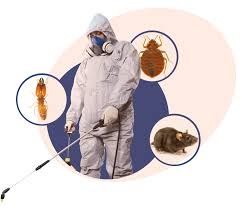Spotting Crickets in NYC: A Handy Guide to Identification and When to Call an Exterminator”
“Learn effective cricket identification tips and discover when to call an exterminator in NYC to handle infestations. Stay informed with this comprehensive guide on managing crickets in your home.”
Crickets are fascinating little creatures. From their iconic chirps to their mysterious presence in many New York homes, they’ve captured the curiosity of both nature enthusiasts and those just trying to get some sleep. While crickets may seem harmless at first glance, they can become a problem if left unchecked, especially in urban areas like New York City. Whether you’re an enthusiast or just someone trying to maintain a peaceful household, knowing how to identify these critters and when to call for professional help is key.
In this guide, we’ll explore everything from cricket identification to when it might be necessary to seek the help of an exterminator in NYC. We’ll keep things simple, informative, and engaging so that you can handle these noisy invaders confidently.

A Quick Overview: Crickets in New York City
Crickets are common in NYC, especially during the warmer months. You might spot them in your backyard, garden, or even inside your home. While most crickets are harmless and even beneficial in small numbers (they feed on decaying plant material and other small insects), a large infestation can lead to sleepless nights and potential damage to household items like fabric, paper, and plants.
There are a few different types of crickets you might encounter in NYC, each with unique characteristics that can help with cricket identification.
Identifying Crickets: Types and Traits
Crickets may look similar at first glance, but upon closer inspection, you’ll notice distinct differences between various species. Knowing which type of cricket is causing your problems can help you decide whether you can handle the issue yourself or need to call in the pros.
1. House Cricket (Acheta domesticus)
The most common type you’ll likely encounter indoors, the house cricket is about ¾ to 1 inch long. They are light brown with three dark bands on their heads. Their chirping is often the first sign of their presence, as male crickets rub their wings together to attract mates. While they don’t pose any major threats, they can damage fabrics and cause irritation with their constant noise.
2. Field Cricket (Gryllus spp.)
These crickets are a bit larger than house crickets, measuring about 1 to 1 ¼ inches long. They are typically black or dark brown and prefer to stay outdoors. However, during cooler weather, they might venture indoors in search of warmth. Field crickets are notorious for eating plants, so if you have a garden, they can quickly become pests.
3. Camel Cricket (Rhaphidophoridae)
Camel crickets have a very distinct appearance, with their hump-backed bodies and long, spindly legs. They are usually tan or brown and can grow up to 1 ½ inches long. Unlike other crickets, camel crickets do not chirp, making them a bit harder to notice. However, they can still be a nuisance, especially in damp basements or crawl spaces.
4. Mole Cricket (Gryllotalpidae)
Known for their burrowing behavior, mole crickets are quite unique. They have large, shovel-like forelimbs used for digging through soil. While they are not common indoors, they can cause damage to lawns and gardens by disrupting root systems. These crickets are usually light brown and about 1 to 1 ½ inches long.
How to Handle Crickets in Your Home
Once you’ve identified the type of cricket in your home, you can decide on the best course of action. For minor cricket issues, DIY methods can work well. Here are a few effective tips to keep them in check:
1. Seal Entry Points
Crickets often find their way indoors through small cracks and openings around doors, windows, and foundations. Inspect your home for gaps and seal them with caulk or weather stripping to prevent crickets from sneaking inside.
2. Keep the Environment Dry
Crickets thrive in moist environments, particularly camel crickets. Dehumidifiers can help reduce moisture in basements and other damp areas, making your home less inviting to these pests.
3. Use Sticky Traps
Sticky traps are a simple and effective way to catch crickets. Place them in areas where you’ve noticed cricket activity, such as near windows, doors, or under furniture.
4. Reduce Outdoor Attractants
If crickets are finding their way into your home from outside, take steps to reduce their numbers near your property. Keep your lawn well-maintained, remove piles of leaves or wood, and ensure that outdoor lighting is minimized since crickets are attracted to light.

When to Call an Exterminator in NYC
For small cricket problems, DIY methods may suffice. However, if crickets have become a persistent issue or if you’re dealing with an infestation, it might be time to bring in a professional exterminator in NYC. Exterminators are experienced in handling cricket infestations and can use a variety of methods to eliminate the problem and prevent future occurrences.
Here are a few signs that it’s time to seek professional help:
1. Constant Chirping
If the chirping of crickets is keeping you up at night despite your best efforts to remove them, an exterminator can help. They have access to more effective methods and can locate crickets in hard-to-reach areas.
2. Damage to Property
Crickets are known to chew on fabrics, paper, and even walls. If you’ve noticed damage to your clothing, curtains, or furniture, a professional can assess the extent of the problem and provide the best solution.
3. Persistent Infestation
If you’ve tried DIY methods and crickets keep coming back, it may indicate a more significant issue, such as an outdoor infestation. Exterminators can identify the source and provide long-term solutions to keep crickets out of your home.
Choosing the Right Exterminator in NYC
If you decide to call in an exterminator, it’s important to choose a professional with experience in dealing with crickets and other common pests in New York. Here are a few tips for finding the right exterminator:
- Look for Local Experience: NYC is unique in terms of its environment and pest challenges. Choose an exterminator with local experience and a proven track record in the area.
- Check Reviews: Online reviews can provide valuable insights into the quality of service an exterminator provides. Look for companies with positive feedback from previous clients.
- Ask About Their Methods: Make sure the exterminator uses safe and effective methods, particularly if you have pets or small children in the home.
- Get a Quote: Ask for a clear estimate of the cost before committing to any services. Reputable exterminators will be transparent about their pricing.
Final Thoughts: Keeping Crickets Under Control in NYC
Crickets may not be the most threatening pests, but their presence can quickly become annoying, especially in the bustling environment of New York City. By learning proper cricket identification and understanding when it’s time to call in professional help, you can enjoy a quieter, cricket-free home. Whether you’re an enthusiast appreciating their natural beauty or someone who just wants peace and quiet, staying informed is the first step in effective pest control.
So, if you’re dealing with a cricket invasion in NYC, remember: A little prevention goes a long way, and when necessary, the right exterminator can make all the difference!



